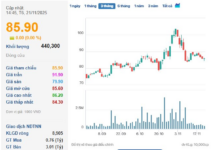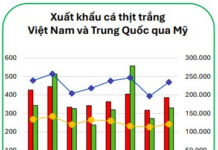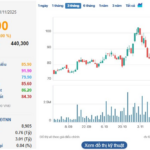Café Amazon, a Thai coffee chain that once held high hopes in Vietnam, has ceased operations entirely as of November 18, 2025, returning all leased premises after nearly five years of presence. The departure of such a prominent brand with a massive ecosystem in Thailand raises significant questions about the current F&B market.
To shed light on this phenomenon, we spoke with F&B expert Nguyen Thai Binh, Director of Concepts Academy (VCS). During our conversation, Mr. Binh analyzed three layers of competition squeezing profit margins, identified pitfalls that many foreign chains fall into when entering Vietnam, and outlined the market gap left by Café Amazon’s exit.
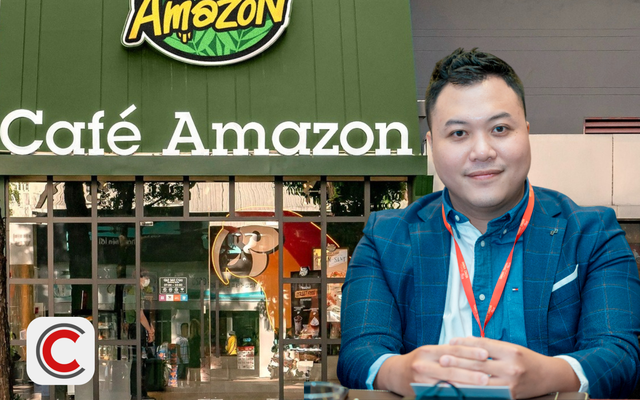
What does Café Amazon’s exit reveal about the competitiveness in the current coffee segment, Mr. Binh?
From a market perspective, Café Amazon’s closure on November 18, 2025, and the return of all leased premises is not just a story of one brand but a clear signal of the fierce competition in the mass coffee segment. In my view, there are three major layers of competition directly squeezing profit margins for coffee chains.
The first layer lies in the store model. In the non-alcoholic beverage industry, common models include pushcarts, take-away kiosks, hybrid models (take-away with seating), standard experience stores in townhouses or malls, and flagship stores. The Vietnamese market currently operates most efficiently in two segments. The budget segment, priced below VND 29,000, is led by pushcarts, sidewalk cafes, take-away kiosks, or hybrids like Guta, Passio, or Milano. The mid-range segment, priced between VND 30,000 and 70,000, is dominated by standard experience chains such as Highlands Coffee, Katinat, Cheese Coffee, Phê La, and Phúc Long. The premium segment, priced above VND 70,000, is relatively small and dominated by foreign brands like Starbucks and %Arabica. The strengths of the budget and mid-range segments include suitable AOV, strong product localization, fast product rollout, high table turnover, and reasonable rental ratios (OCR). Meanwhile, Amazon opted for large stores with heavy architectural investments, leading to cost pressures exceeding the pull of the mass market.
The second layer of competition stems from Vietnamese coffee culture itself. Vietnamese coffee habits differ from those in Thailand. People visit cafes to meet friends, work, and spend hours enjoying the space. They are also loyal to Vietnamese flavors, and local brands understand this better than anyone, catering precisely to customer needs.
The third layer lies in retail locations and premises. The past two years have not been favorable: rental prices have stagnated but not decreased; consumers are cutting back on spending, reducing foot traffic; prime locations are no longer guaranteed revenue generators as Gen Z prioritizes experiences over prime spots; and competition is growing from brands with “check-in” worthy spaces or packaging. All this points to one reality: beautiful premises with the wrong model will quickly “die from costs.” Thus, Café Amazon’s exit is a logical consequence of an unsuitable model, suboptimal operating costs, and insufficient localization in a mature and fiercely competitive market.

Does this withdrawal reflect any changes in consumer behavior or the structure of Vietnam’s coffee market?
In my observation, there are three significant changes in Vietnamese consumer behavior over the past three years. First, Vietnamese consumers are shifting from “drinking for fun” to “drinking with purpose.”
The iPOS 2025 report shows that while people still drink coffee daily, consumption trends are gradually shifting toward the mid-range and near-mid-range segments. A staggering 77.5% of consumers prefer beverages priced between VND 21,000 and 50,000 per serving, and 65% are willing to use ultra-affordable F&B products. This leads to a situation where “frequency increases but spending per visit decreases,” putting significant pressure on mid-range and premium models that lack differentiation.
Second, coffee consumption behavior now exhibits two parallel trends. One is a clear demand for distinctly Vietnamese flavors.
Data from Q&Me shows that 89% of Vietnamese chose Vietnamese coffee in the last 30 days; iced milk coffee and phin coffee remain dominant. Meanwhile, Amazon focused on international drinks like lattes, mochas, cappuccinos, and smoothies, failing to meet the flavor preferences of most Vietnamese consumers. The other trend is that consumers prioritize fast-service models, such as take-away kiosks or mid-range chains capable of quick service.
Third, experience and emotion are becoming decisive factors, especially for Gen Z. They choose cafes not just for the product but for the space, brand story, signature products, or the unique vibe of the place. Amazon’s spaces were not distinctive enough, lacked local elements, had no clear narrative, and failed to evoke emotion. This is why their exit clearly reflects the changing expectations and behaviors of Vietnamese consumers today.
From Café Amazon’s case, what key points should international chains note when entering the Vietnamese market?
I see four “pitfalls” that any international brand must avoid when entering the Vietnamese market. First, never copy-paste a model from abroad. Vietnam is not Thailand or Singapore; drinking habits, premises equations, spending levels, and “long-sitting – meeting – working” behaviors are entirely different, and rental ratios (OCR) in major cities are much higher. Amazon’s failure was primarily due to applying the PTT model—a captive market serving gas station customers—to a market with no natural advantage for such a model.
Second, products must be localized to a depth of at least 50–70%. Starbucks is a prime example of an international brand that has adapted well: adjusting recipes seasonally to suit Vietnamese tastes (like Dolce Misto coffee), designing locally inspired spaces, opening “Hanoi-style sidewalk” models, and developing “must-try locations” like Starbucks Reserve in Bitexco, Diamond Plaza, or iconic spots like Ninh Binh and the City Post Office. By linking stores to famous locations, culture, or art, the brand elevates its positioning through location and space.
Third, premises are just one factor, not the deciding one. Wrong premises can quickly jeopardize a store, but the wrong model is what truly cripples profit margins. Amazon is a clear example: beautiful premises but an unsuitable operating model.
Fourth, international brands must understand that Vietnam’s cost structure is constantly changing. Lower AOVs due to “increased frequency but reduced spending per visit,” high staff turnover, elevated rental ratios in major cities, and rapidly changing consumer behavior. Without a clear grasp of these factors, brands will struggle to maintain long-term effectiveness.
As an expert, what factors are decisive for a foreign coffee chain to sustainably develop in Vietnam?
In my view, to sustainably develop in Vietnam, foreign coffee chains must embody four elements: Fit – Fast – Feel – Finance.
First, Fit – the model must truly “fit” the Vietnamese market. “Fit” encompasses multiple layers: aligning with Vietnamese AOVs, targeting the right customer segments, matching distinct consumer behaviors, addressing premises equations, and fitting cash flow. A model that doesn’t “fit” in any aspect can create significant cost and operational pressures.
Second, Fast – adaptation speed. Vietnam’s F&B market is extremely volatile: trends rise and fall in short cycles, new players constantly emerge, and Gen Z behaviors shift rapidly. Foreign brands must make decisions quickly, experiment swiftly, and adjust promptly to survive and expand.
Third, Feel – crafting experiences with Vietnamese emotions. Coffee in Vietnam is a culture, not just a beverage. Brands that connect emotionally with customers are the ones that will succeed. Highlands creates a “coffee for everyone” vibe, Cộng Cà Phê evokes nostalgia, Phê La emphasizes flavor and unique brewing methods, and Katinat combines check-in elements with trendy products. Even packaging has become a creative battleground for major brands to attract young consumers.
Fourth, Finance – controlling cost structures effectively: from rental ratios (OCR) and labor costs to capital investments (Capex). Excessive investment in flagship models from the outset can burden brands financially before reaching breakeven.
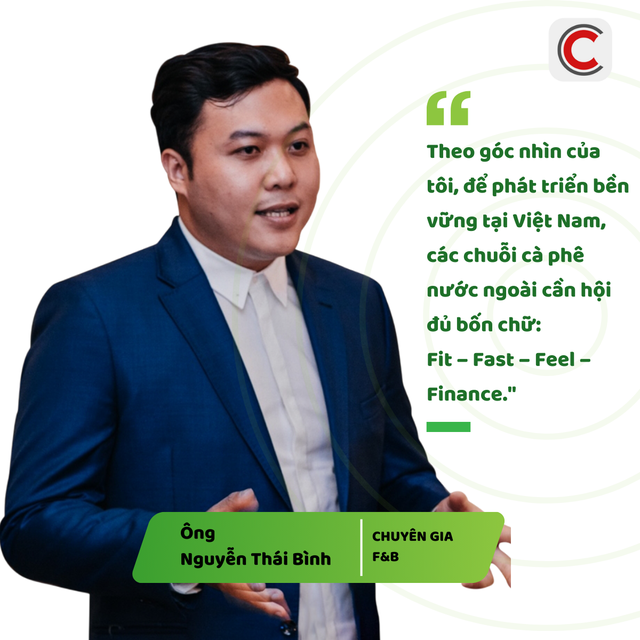
What opportunities does Café Amazon’s departure create for specific models or segments in Vietnam’s coffee market?
The gap left by Amazon is actually creating opportunities for models that align with new Vietnamese consumer behaviors. Take-away and compact kiosk models under 30m², like Guta or Passio, still have growth potential due to their lightweight operations, fast service, and low rental costs.
Simultaneously, coffee models with local flavors and affordable prices are making a strong comeback. Vietnamese consumers prioritize familiar choices like iced milk coffee, Robusta, Vietnamese cold brew, or specialty products with local flavors like Fine Robusta and Vietnamese Arabica. This is a highly promising playground for specialty roasters or chains bringing unique products closer to consumers, such as Every Half or Là Việt.
Additionally, hybrid café models combining co-working spaces, like Workflow or Phúc Long Premium, are gaining attention. These models cater to the need for both coffee and work, aligning with the flexible space usage habits of young consumers and remote workers.
Today’s Coffee Prices (Nov 8): A Sharp Rebound in the Market
Coffee prices today surged by triple digits for both Robusta and Arabica, marking a significant rebound in the market.












